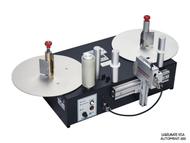The Hidden Costs of Poor Label Quality: How to Avoid Smudging, Fading, and Peeling Issues
29th Jul 2025
In a world where first impressions can make or break a product, label quality isn't just an operational detail—it’s a key element of brand perception and customer trust. While many businesses focus on graphic design and packaging, the durability and performance of a label often go unnoticed until it fails. A smudged logo, a faded barcode, or a peeling label doesn’t just look unprofessional—it can also lead to serious consequences like product returns, regulatory violations, and loss of customer confidence.
Whether you're in the food and beverage industry, cosmetics, manufacturing, or logistics, the quality of your labels plays a pivotal role in everything from shelf appeal to compliance. In this blog, we’ll explore the hidden costs of poor label quality and how to proactively avoid common pitfalls like smudging, fading, and peeling. We’ll also offer best practices for choosing high-quality label materials, printing technologies, and maintenance strategies that ensure every label you apply reflects the high standards of your brand.
The Real-World Consequences of Poor Label Quality
While it’s easy to dismiss label quality issues as minor nuisances, their real-world impact can be both extensive and expensive. Let’s break down some of the hidden costs and consequences that arise when label performance is compromised.
1. Brand Damage
Peeling or smudged labels on store shelves create the impression of low-quality products—even if the product itself is excellent. This visual degradation undermines consumer trust and can lead to reduced sales. For example, a luxury skincare product with a bubbling or wrinkled label instantly loses its premium appeal.
2. Loss of Compliance
In industries like pharmaceuticals, chemicals, and food manufacturing, labels often carry critical safety, dosage, or expiration information. A faded barcode or unreadable warning text due to poor ink or label materials could result in regulatory non-compliance or product recalls—both of which are costly and damaging to reputation.
3. Increased Operational Costs
When labels fail—whether from smudging during printing, fading over time, or peeling during transportation—businesses must reprint and reapply them. This leads to wasted materials, labor hours, and printing supplies. These operational inefficiencies accumulate fast, especially in large-scale production environments.
4. Customer Returns and Dissatisfaction
If a customer receives a product with a damaged label, it can lead to confusion, complaints, or returns. In e-commerce, this is particularly problematic since the label is often the only branding visible when the product arrives.
Quick Tip: Investing in high-quality printing materials and ink packs, like the Epson T01D320 Magenta High-Yield Ink Pack, helps minimize fading and ensures color consistency across batches.
Common Causes of Smudging, Fading, and Peeling
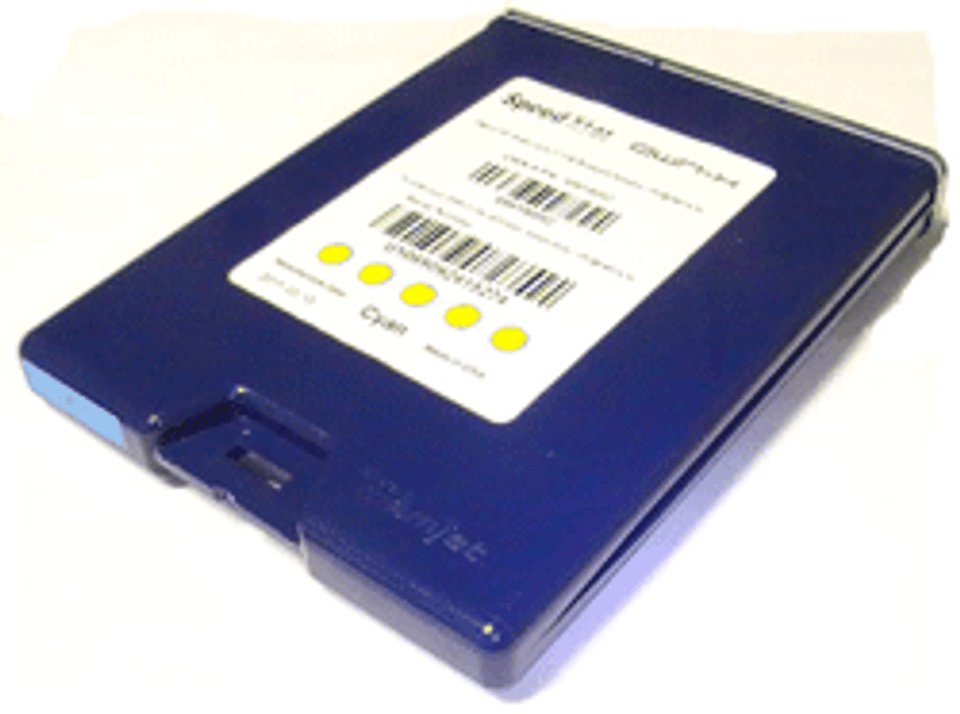
Understanding why label quality issues occur is the first step toward preventing them. Below are some of the most common culprits behind smudged ink, faded text, and peeling edges.
1. Low-Quality Label Materials
Not all label materials are created equal. Using paper-based or cheap synthetic materials that aren’t compatible with your printer can result in poor adhesion, curling, or deterioration over time—especially when exposed to heat, moisture, or chemicals.
2. Incorrect Ink or Toner
Mismatched inks or toners can be just as problematic. For instance, using dye-based inks on glossy or synthetic surfaces can cause smudging or streaking. Instead, opt for pigment-based ink packs or toners that are specifically designed for durability and water resistance, like the Afinia LT5C Toner (Black).
3. Incompatible Print Settings
If your print settings don’t align with your label stock—such as incorrect temperature settings for thermal printers or low DPI for high-res graphics—you’re likely to experience smudging or misalignment. Regular calibration and testing are critical.
4. Environmental Exposure
Labels exposed to harsh conditions like UV light, cold storage, or high humidity need to be printed with specialized materials. Standard labels will fade, peel, or disintegrate if used outside their recommended environments.
5. Poor Storage Conditions
Even before printing, improperly stored labels can collect dust, curl at the edges, or lose adhesive strength. Always keep labels in a cool, dry place and use them within the manufacturer’s recommended time frame. You can buy ink cartridges for printers and pair them with affordable blank inkjet labels for more reliable printing results.
Best Practices for Choosing High-Quality Labels and Inks
To avoid the pitfalls of smudging, fading, and peeling, it’s essential to invest in the right materials and processes from the outset. Here’s how to make smart, cost-effective choices that protect your brand and boost operational efficiency.
1. Select Labels Based on Application
Not all labels are suitable for every use case. For instance:
- Waterproof labels are necessary for beverages or products stored in humid environments.
- Chemical-resistant labels are a must for industrial or laboratory use.
- Heat-resistant labels perform best on hot-fill containers or products exposed to high temperatures.
DuraFast Label Company offers a range of custom thermal transfer labels and inkjet-compatible options that meet various durability needs.
2. Use High-Yield, Durable Ink Packs and Toners
High-yield cartridges reduce the frequency of replacements and are designed to maintain color integrity and sharpness over long print runs. Products like the Epson T01D120 Black High-Yield Ink Pack (50,000 pages) and Primera CX1000 Black Toner Cartridge (Extra High Yield) are excellent choices.
3. Match Printer Type with Label Stock
Thermal transfer printers work best with specific ribbon and label types, while inkjet printers require coated label surfaces for proper ink absorption. Be sure to choose label stock recommended for your device to avoid quality issues.
4. Buy from Trusted Suppliers
Working with a reputable supplier like DuraFast Label Company ensures that you receive consistent, tested, and high-performing label and ink solutions. Whether you want to buy blank inkjet labels online or need help choosing the right toner, expert guidance is just a click away.
How Poor Label Quality Can Affect Your Business

While labels might seem like a minor detail, their quality—or lack thereof—can have a far-reaching impact on your brand, operations, and bottom line. Let’s look at how these issues play out in real-world scenarios.
1. Damaged Brand Reputation
Smudged, faded, or peeling labels send the message that your business cuts corners. Consumers may equate low-quality labeling with low-quality products, especially in industries like cosmetics, food, and pharmaceuticals where presentation matters.
Imagine picking up a high-end candle with a wrinkled label or a gourmet jar with smeared print. These impressions damage trust and reduce the chance of a repeat purchase.
2. Increased Compliance Risks
In regulated industries, label clarity isn’t just about aesthetics—it’s a compliance issue. Illegible safety warnings, barcodes, or expiration dates due to poor-quality printing can lead to fines, product recalls, or shipping rejections.
Using durable materials like thermal transfer labels and high-quality ink or toner helps prevent such issues.
3. Operational Disruptions and Rework
Peeling or unreadable labels often require reprinting or manual relabeling, increasing labor costs and slowing down your supply chain. That’s money and time wasted.
Additionally, low-grade inks can clog printers, requiring maintenance or even replacement—another hidden cost of poor label quality.
4. Customer Dissatisfaction and Lost Sales
If your labels fade before the product reaches the customer, particularly for items with longer shelf lives, it can create confusion or dissatisfaction. This is especially harmful for online sellers relying on clear branding and unboxing experiences.
Don’t underestimate the role of quality ink and well-designed labels in making a lasting impression.
Tips for Ensuring Long-Lasting Label Performance
To avoid the pitfalls of poor label quality, it’s crucial to implement smart choices from the very start—from materials to print technology. Here are proven strategies to help your labels stand the test of time.
1. Choose the Right Label Material for the Environment
Environmental factors like moisture, heat, or chemical exposure can degrade label quality quickly. Use synthetic materials like polypropylene or polyester for durability in harsh conditions. These materials resist smudging, tearing, and peeling far better than paper-based labels.
For example, if your product is exposed to refrigeration or handling, durable thermal transfer labels offer excellent resistance to moisture and abrasion.
2. Use High-Quality Inks and Toners
Low-quality inks are prone to fading, smudging, or flaking. For optimal results, invest in high-yield, manufacturer-approved ink cartridges and toners designed for your specific printer model.
For color-rich and long-lasting prints, consider the Afinia LT5C black toner or Afinia L701 yellow Memjet ink—perfect for vibrant, durable labels.
3. Invest in Professional-Grade Label Printers
Desktop inkjet or laser printers may not be suitable for high-volume, high-quality label printing. Industrial and commercial-grade label printers like those available from DuraFast Label Company offer precise printing and long-lasting performance.
Reliable printing ensures every label—from barcodes to branding—comes out clear and consistent.
4. Test Your Labels Before Full Production
Always run samples in real-world conditions before rolling out a label design in bulk. This will help you assess the durability of both the material and the print, avoiding costly production errors.
You’ll be surprised how a quick water or scratch test can save you from major headaches down the line.
Best Practices for Printing and Application
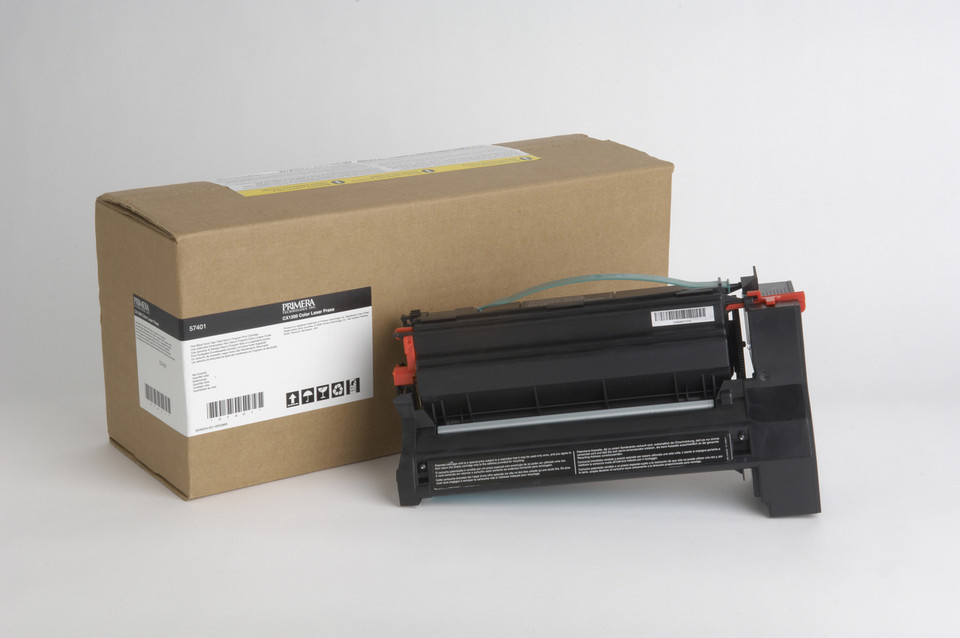
Even the best labels can fail if they’re not printed and applied correctly. Following the right procedures ensures your labels remain intact, legible, and visually appealing throughout the product's lifecycle.
1. Maintain Your Printer Regularly
Dust, ink residue, or mechanical wear can compromise print quality. Clean your print heads and rollers routinely, and use recommended maintenance kits. This ensures crisp, smudge-free prints—especially important when using affordable blank inkjet labels.
If you're running high-volume jobs, devices like the Labelmate AUTOPRINT 300 offer reliable reel-to-reel printing with precision and speed.
2. Apply Labels on Clean, Dry Surfaces
Oil, dust, or moisture can prevent adhesive from bonding properly. Always clean surfaces before application and avoid applying labels in high-humidity environments unless you’re using labels designed for it.
For extreme conditions, custom thermal transfer labels offer exceptional adhesive strength and resistance to peeling.
3. Use Proper Label Application Tools
Hand-applying labels may lead to wrinkles, air bubbles, or misalignment. For consistency and speed, consider semi-automatic or automatic applicators—especially if your business deals with large batches.
Label applicators paired with accurate label counter machines help ensure every product is labeled correctly and accounted for.
4. Store Labels in Optimal Conditions
Exposure to direct sunlight, heat, or moisture can damage label stock before it’s even used. Store your blank inkjet labels in a cool, dry space in their original packaging to preserve quality.
How to Choose the Right Labels for Your Business
Selecting the correct label type is essential for ensuring durability, compliance, and visual appeal. Here’s what to consider when choosing labels that prevent smudging, fading, and peeling.
1. Understand Your Application Environment
Labels used for refrigerated foods, outdoor equipment, or industrial products face vastly different challenges. Moisture, UV exposure, and abrasion are key factors that determine which material and adhesive will perform best.
For example, products stored in cold or humid environments benefit from thermal transfer labels, which resist moisture and temperature fluctuations better than standard inkjet labels.
2. Choose the Right Label Material
There’s no one-size-fits-all when it comes to materials. Consider:
- Paper Labels – Cost-effective, suitable for short-term indoor use.
- Polypropylene (BOPP) Labels – Durable, water- and oil-resistant; ideal for cosmetics or food packaging.
- Polyester (PET) Labels – Extremely durable and resistant to chemicals, heat, and tearing.
To explore options, you can buy blank inkjet labels online in different materials and finishes tailored to your product’s needs.
3. Pick Compatible Labels for Your Printer
Not all labels work well with all printers. Laser printers bond toner onto labels using heat, while inkjet printers use liquid ink. Using the wrong type can lead to smudging or poor adhesion.
For example, if you’re using inkjet printers, make sure your blank inkjet labels for sale are designed to absorb ink quickly and evenly.
4. Ensure Compliance and Durability
Some industries require labels to meet regulatory standards. If your business operates in pharmaceuticals, food, or chemicals, your labels may need to be compliant with FDA, GHS, or BS5609 standards.
Using high-quality label counter machines, such as the Labelmate RRC-400-U, ensures accurate counting and inspection before product release.
The Role of High-Quality Printers in Preventing Label Issues
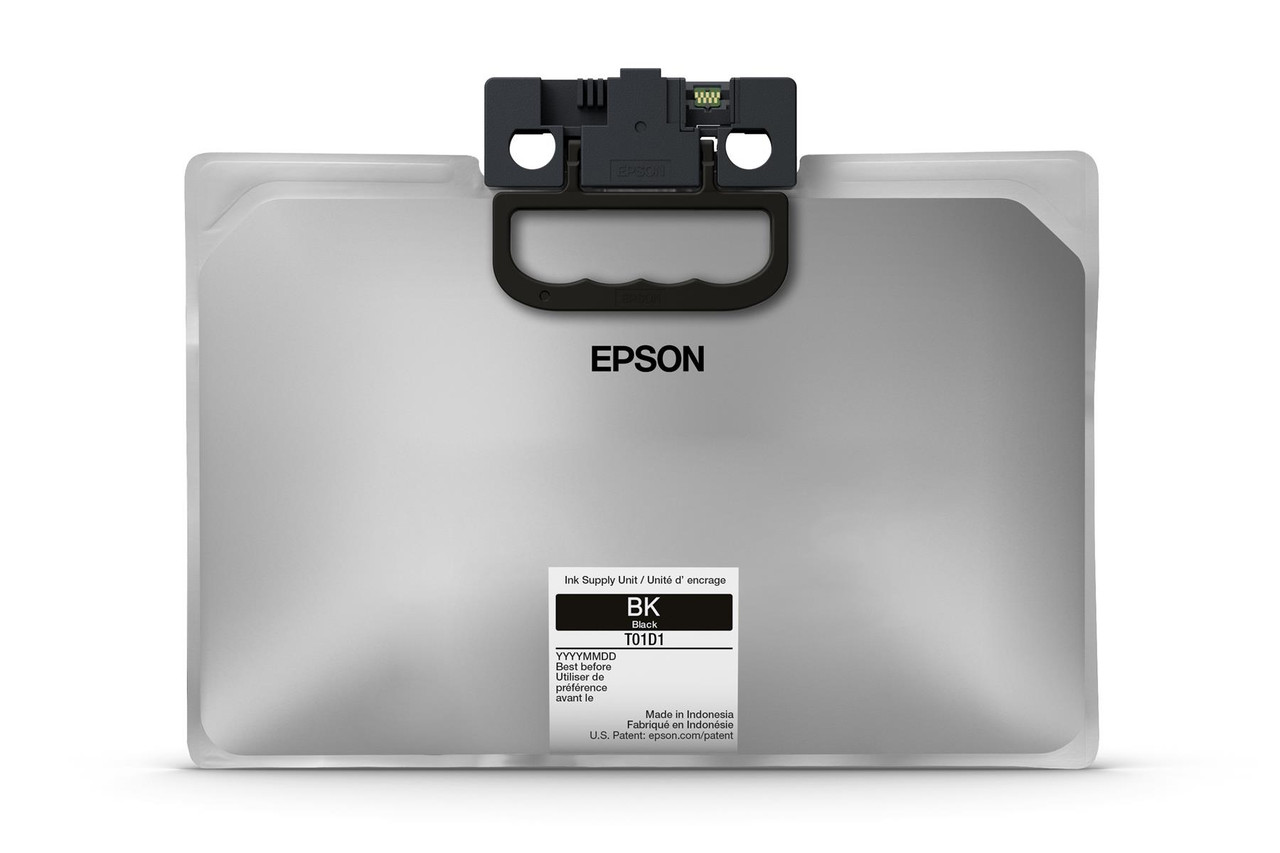
In addition to choosing the right label material, the printer you use plays a significant role in ensuring label quality. High-quality printers designed for labeling applications are essential to achieve consistent results without smudging, fading, or peeling.
Printers like the Afinia L501 Thermal Transfer Printer are designed to handle heavy-duty printing needs while delivering clear, crisp labels that stand up to everyday wear and tear. The key to preventing smudging and fading starts with using the right equipment for your specific label type.
DuraFast Label Company offers a wide range of industrial and office printers suited for every business. Whether you’re printing thermal transfer labels for sale or custom thermal transfer labels, you can trust that DuraFast provides the equipment and expert advice necessary to ensure your labels will meet your standards for durability and performance.
Consulting with Experts for Tailored Labeling Solutions
If you’re unsure which labels or printing methods are best for your needs, consulting with labeling experts is a smart choice. DuraFast Label Company is well-known for its customer support and personalized service, helping businesses select the right labels, printers, and supplies.
Whether you need assistance in choosing affordable blank inkjet labels for your printer or you’re looking for a reliable label counter machine for sale, DuraFast’s knowledgeable team can provide tailored recommendations. Their vast inventory and industry expertise make it easier for businesses to find the perfect labeling solution that meets both quality and budgetary requirements.
How Label Quality Affects Your Business's Bottom Line
While it may seem like a small detail, poor label quality can have a significant impact on your bottom line. Labels that fade, peel, or smudge not only damage your brand's reputation but can also lead to costly product returns, regulatory fines, or loss of customer trust. A label failure during transit, for instance, could lead to labeling errors that make products non-compliant with industry standards.
By investing in high-quality labels and printers, businesses can avoid these hidden costs and ensure that their products are both market-ready and compliant with regulations. DuraFast Label Company offers a range of high-quality thermal transfer printers and durable label stock options, allowing businesses to avoid the financial burden of poor label performance.
Choosing reliable equipment and premium label materials can prevent these costly issues and provide long-term savings by reducing the need for reprints and re-labeling.
The Importance of Regular Labeling Maintenance
Label printing is not a "set it and forget it" task. Regular maintenance and quality checks on your printing equipment, as well as on your label stock, are vital to keeping labels performing at their best. Over time, printer heads can wear down, and even the highest-quality labels can face challenges like ink smudging or color fading if not properly stored and maintained.
DuraFast Label Company understands the need for consistent, high-quality labeling. They offer various maintenance services, including technical support per hour to ensure your equipment is always in top condition. With proper care and the right products, businesses can ensure their labeling systems stay efficient and their labels remain flawless.
Tailored Label Solutions for Every Industry
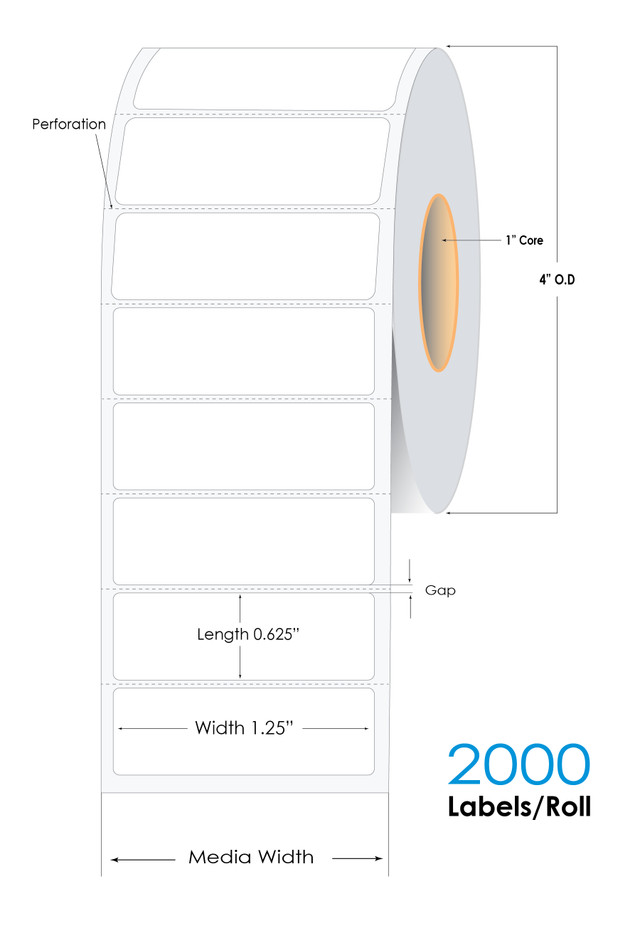
Different industries require different labeling solutions. From food and beverage to pharmaceuticals, labels must meet specific requirements that often go beyond simple branding. For example, the food industry demands waterproof, smudge-proof, and chemically resistant labels that comply with FDA regulations. Similarly, the pharmaceutical industry needs labels that can withstand extreme conditions like temperature fluctuations and moisture exposure.
DuraFast Label Company provides specialized solutions for every industry. With their vast selection of custom thermal transfer labels, and industry-specific materials, businesses can rest assured that they are equipped with the right labeling technology to meet all their needs. Whether you are looking for affordable blank inkjet labels or require specialized custom thermal transfer labels, DuraFast’s diverse product range ensures that you will find exactly what your business requires.
Choose the Right Labels for Long-Term Success
The hidden costs of poor label quality are often underestimated, yet they can severely impact your brand’s reputation, compliance with regulations, and overall profitability. From smudging and fading to peeling and ineffective adhesion, these issues can disrupt operations, create unnecessary expenses, and damage consumer trust. However, with the right choices in label materials, printers, and maintenance practices, businesses can avoid these pitfalls and ensure their labels perform consistently under varying conditions.
When selecting labels and printers, it’s crucial to invest in high-quality options that offer durability, reliability, and performance. At DuraFast Label Company, you can find a wide range of custom thermal transfer labels, affordable blank inkjet labels, and specialized printing solutions tailored to your industry’s needs. With years of experience in providing top-tier label products and support, DuraFast helps businesses like yours prevent label failures that can affect both customer satisfaction and compliance.
By choosing DuraFast Label Company’s premium products, businesses can optimize their labeling processes, save on reprinting costs, and maintain a professional appearance that resonates with consumers. Whether you need durable thermal transfer labels for shipping or blank inkjet labels for product branding, DuraFast Label Company is here to provide solutions that keep your products looking great and performing well.
Don’t let poor-quality labels drag your business down. Invest in the best, and trust DuraFast Label Company to provide high-quality labels that enhance your brand’s reputation and drive long-term success. Contact us today to learn more.
